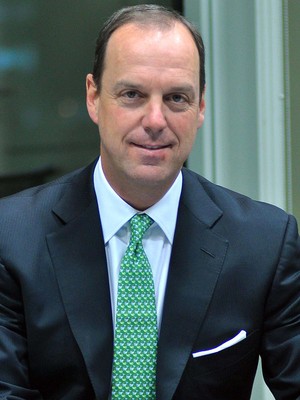http://www.radioink.com/Article.asp?id=2596083&spid=30800

12-20-2012
At some point, advertisers will be able to see Arbitron ratings for radio and Pandora side-by-side. That's according to Nielsen's President of Global Media Products Steve Hasker (pictured). Hasker told Bloomberg, "We want to cover as much of the media landscape as possible and be helpful to our clients in that way." Up until now there has never been any indication that Pandora is an Arbitron client. It sounds like that will change when Nielsen takes over. This has been a touchy subject for radio operators. Pandora has come hard after radio's revenue and radio is, by far, Arbitron's number one customer.
Pandora CEO Joseph Kennedy has often compared Pandora to radio, not only overall but specifically in large radio markets. He says Pandora is reinventing radio. He would compare Pandora listeners in total to a specific radio station. Would that matter to an advertising agency? Maybe not. If Pandora says we have X number of listeners in New York City and Z100 has X number of listeners, would an advertiser really care? Or would an advertiser want Pandora to show the number of listeners it has in New York City tuning in to the same format as Z100 so the comparison is apples to apples.
radio markets. He says Pandora is reinventing radio. He would compare Pandora listeners in total to a specific radio station. Would that matter to an advertising agency? Maybe not. If Pandora says we have X number of listeners in New York City and Z100 has X number of listeners, would an advertiser really care? Or would an advertiser want Pandora to show the number of listeners it has in New York City tuning in to the same format as Z100 so the comparison is apples to apples.
Back on December 4th Kennedy said, "with the combination of increased market share and integration into ad-buying platforms, we will make our most significant investment yet in disrupting the radio advertising market." While Pandora would not reveal what those ad-buying platforms were one might speculate Kennedy may have been referring to ratings. Pandora says it now has over 7% of all radio listening in the U.S. Although there is no real way to confirm that.
During the Nielsen/Arbitron conference call this week, incoming Arbitron CEO Sean Creamer said the marketplace is working out the definition of radio. "Arbitron's job is to measure radio no matter how radio is defined. We need to measure pure-plays. We never said we would not  measure anyone." Hasker told Bloomberg, "Marketers are looking for simpler ways to compare their ad spending across media. As part of that effort, Nielsen plans to start measuring popular digital radio services such as Pandora after the acquisition." It sounds from Hasker's comments that the definition of radio has already been made and Pandora is in the club.
measure anyone." Hasker told Bloomberg, "Marketers are looking for simpler ways to compare their ad spending across media. As part of that effort, Nielsen plans to start measuring popular digital radio services such as Pandora after the acquisition." It sounds from Hasker's comments that the definition of radio has already been made and Pandora is in the club.
There's no question consumers are moving more and more to their devices. They listen to music, radio stations and Internet radio on their smartphones and tablets and that trend is expected to rise. Prognosticators are also saying ad spending on mobile devices will continue to grow over the next five years. Perhaps Pandora is the new radio. It offers consumers fewer commercials and advertisers super-targeted ads. The radio industry continues to stuff as many commercials into every hour without seeing any increase in revenue and has yet to figure out how to make serious money with its streams.
Pandora can certainly provide advertisers with metrics on listeners radio has never been able to provide. And the "sample size" is huge compared to what radio can provide. Radio has always been able to provide advertisers with localism, big promotions, great ideas, huge personalities and other value Pandora may never be able to provide. Your local car dealer probably cares about that but does Madison Avenue? As we've been reporting, radio needs to understand advertising decisions are being made based on data not because "Big Chuck" is coming over Saturday morning with hot dogs and balloons. Can those two definitions be reconciled so you can call them both "radio"?
 NYSE Euronext, via Business WireDavid Calhoun, chief of Nielsen, said the $1.26 billion deal would help it gauge behavior.
NYSE Euronext, via Business WireDavid Calhoun, chief of Nielsen, said the $1.26 billion deal would help it gauge behavior. GREG SCILEPPI, PRESIDENTE DA ROBERT HALF (FOTO: DIVULGAÇÃO)
GREG SCILEPPI, PRESIDENTE DA ROBERT HALF (FOTO: DIVULGAÇÃO)




Like on Facebook
Share on Facebook
Share button
Share on Twitter
Just click thetweet button
Google +1
Share by email
Click here to emailthis page to friends
Or pick your favorite ...